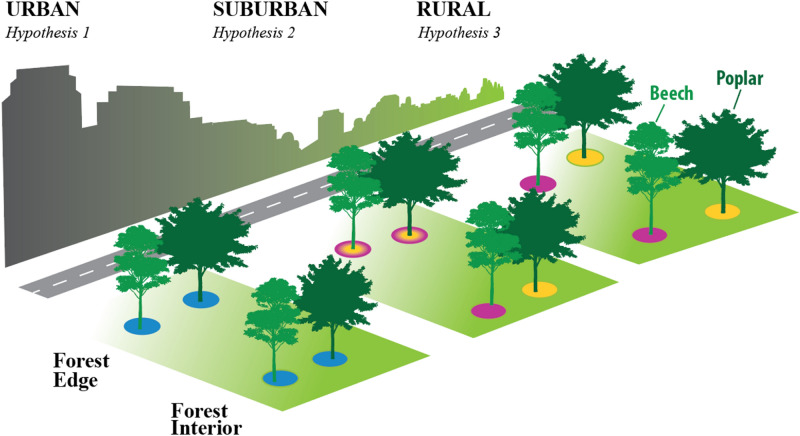Figure 1.
Conceptual diagram of hypothesized soil microbial community (SMC) structural changes [represented at tree bole via colored circles (for example, unique colored circles signify dissimilarity of the SMC)] in response to tree species (beech vs. yellow poplar) forest type (rural, suburban, and urban) and location (interior vs. edge). Additionally, diagram provides on overview of our sampling methods as all forest edge locations were directly adjacent to a roadway and interior locations were ~ 100 m from defined roadway edge. H1: Intensified urban pressures at both forest edge and interior will drive complete SMC structure similarity despite of tree species influence. H2: SMC structure will begin to converge at forest edge regardless of tree species due to the overriding effect of environmental inputs; however, suburban interior forest SMC will remain dissimilar due to tree overriding environmental effects. H3: Dissimilar SMCs will occur as a result of tree influence due to moderate fluctuations of environmental conditions within both edge and interior rural forests.

